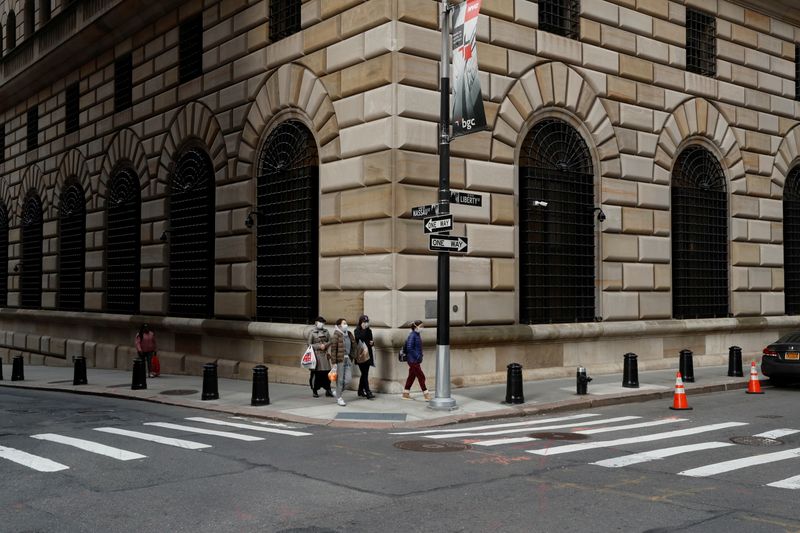(Reuters) -Mortgage forbearance was a lifeline for U.S. low-income homeowners and business owners who faced hardship during the pandemic, giving them the leeway to stay in their homes and keep up with other debt payments, according to research released by the Federal Reserve Bank of New York on Wednesday.
The end of that support could lead to a rise in mortgage delinquencies for many of the households still in forbearance, including low-income households and people who were behind on payments before the pandemic, researchers said.
“Whether these forbearances are simply forestalling future trouble for strained business owners, or if the post-pandemic economy will support the owners to catch up the lost months remains to be seen,” researchers wrote in a series of blog posts https://libertystreeteconomics.newyorkfed.org/2021/05/keeping-borrowers-current-in-a-pandemic.html released Wednesday.
The share of borrowers in forbearance rose sharply to over 7% in the early months of the pandemic, but many homeowners exited the program by the summer and just over 4% were in forbearance by late March 2021. A core group of borrowers, primarily consisting of people in low-income neighborhoods and those with loans insured by the Federal Housing Administration stayed in forbearance for an extended period of time.
Small business owners also tapped into the program at high rates, with 11% entering forbearance by May 2020, a share that dropped to about 5% by March 2021. People who owned service-sector businesses, which were disproportionately affected by pandemic-related restrictions, took up forbearance at higher rates.
Business owners were more likely to tap into the equity in their homes using home equity lines of credit, the New York Fed found.
The program, which was rolled out under the CARES Act, made it possible for homeowners to miss up to 12 months of mortgage payments if they faced financial difficulties because of COVID-19. Some agencies granted extensions to allow for up to 18 months of forbearance.
Holding off on mortgage payments provided a period of financial breathing room to households hit by job losses as much of the economy shut down in an effort to halt the virus.
Consumers paid off their credit cards at the fastest pace in two decades during the pandemic and mortgage forbearance helped. The typical household in mortgage forbearance reduced its credit card debt by $2,100 over the past year, compared to $900 for borrowers not in forbearance.
Borrowers in forbearance even saw their credit scores rise by 14 points on average during the pandemic, more than the average 7 point gain for people who were never in forbearance.
But many households continued to struggle with other debt. Delinquencies on non-housing debt, including auto loans and credit cards, temporary leveled off after March 2020 but then began rising again.
It remains to be seen how households still in forbearance will cope when the program ends, but delinquencies could rise because those borrowers have lower payment rates than those that exited the program more quickly, researchers said. Some 40% of borrowers who were 90 days past due on their mortgage pre-pandemic were still in forbearance in March 2021, the report found.
However, it is unlikely that delinquencies will rise to levels seen during the Great Recession, when more than 6% of mortgagors became 90 or more days delinquent, they said. Instead, the serious delinquency rate could rise to around 3.8%, if all borrowers in forbearance become delinquent, above the pre-pandemic rate of 1.3%, researchers said.
(Reporting by Jonnelle Marte; Editing by Andrea Ricci)





















